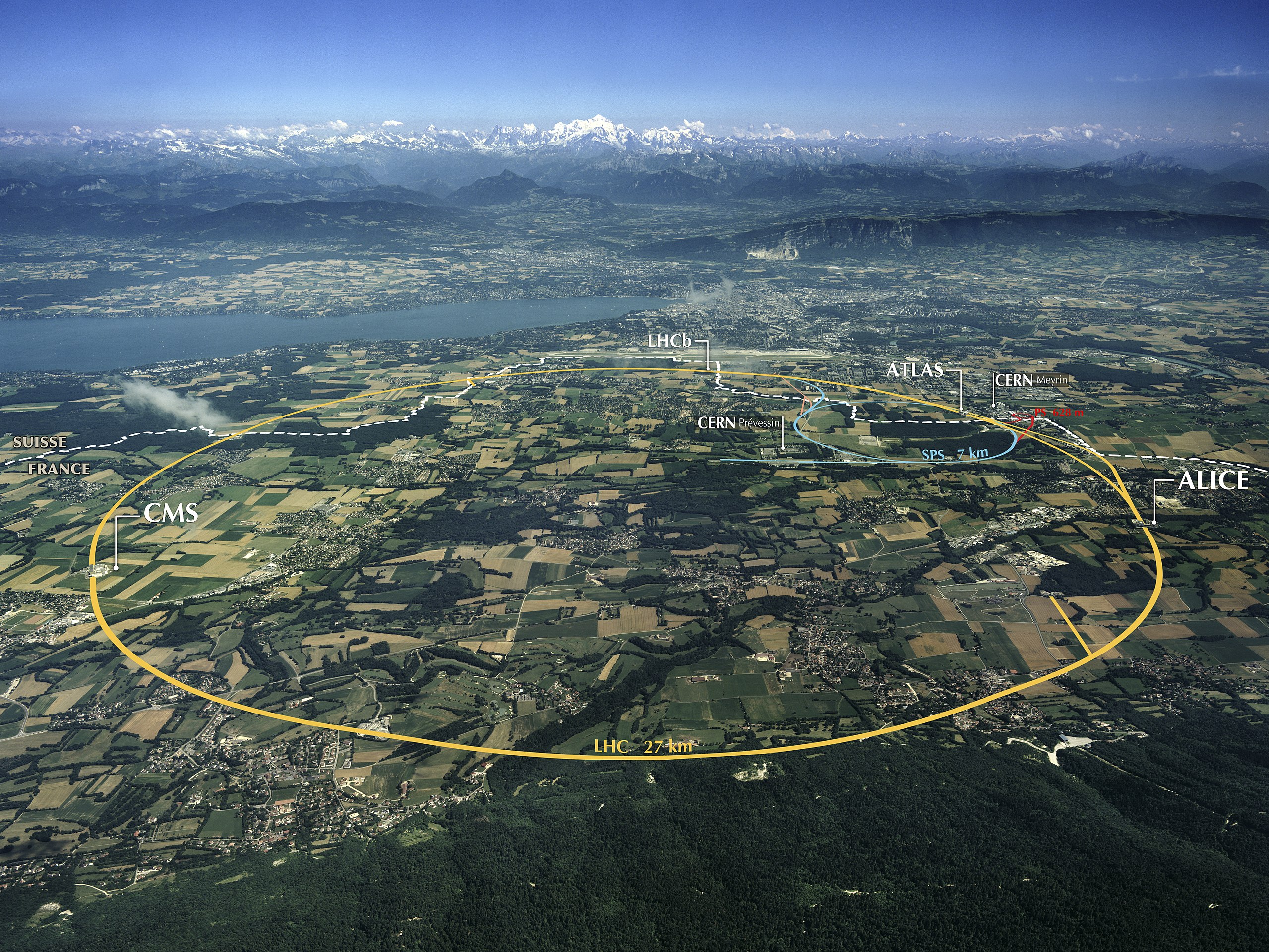


Chapter 5
The CERN Large Hadron Collider
The Large Hadron Collider (LHC) is a proton-proton collider located at CERN on the border of Switzerland and France (Figure 5.1). It is the largest and highest energy particle accelerator in the world, with a circumference of 27.6 and a center-of-mass (COM) energy of 13.6, reproducing energies in the universe seconds after the Big Bang.
The tunnel was initially built for the large electron-positron collider (LEP), which operated from 1989 to 2000. Being point particles and not interacting with the strong force, electrons and positrons produce “clean” collisions (i.e., with low background) and can be simulated with relative ease; thus, LEP allowed high precision measurements of the electroweak sector of the standard model (SM), as discussed in Chapter 4. The drawback, however, is that due to the power loss from synchotron radiation, which scales as mass of the accelerated particle, their low mass limits the COM energy that can be attained with electron-positron colliders.
Protons, on the other hand, are composite particles and produce “noisy”, high-multiplicity collisions, but are more massive and, hence, can be accelerated to much higher energies. This is why, from early on, the LEP tunnel had also been proposed as a site for a future hadron-hadron collider, which could achieve an order-of-magnitude greater energy than the previous energy-frontier machine, the Fermilab Tevatron. The LHC was eventually approved in 1994 and was built in collaboration with over 100 countries at CERN between 1998 and 2008. It is primarily a proton-proton collider, designed with the goal of accelerating each proton to , for a COM energy of , to explore the energy scale for the first time. It also, less frequently, collides heavy ions to study QCD and the quark-gluon plasma inside nuclei.
The collisions occur at four interaction points around the ring and are observed by a total of nine detectors: two large general-purpose detectors, CMS and ATLAS, two more specialized detectors, ALICE and LHCb, for heavy-ion- and b-physics, respectively, and five smaller scale experiments, TOTEM, LHCf, MoEDAL, FASER, and SHiP. In this section, we describe the LHC accelerator in Section 5.1 and the overall number of collisions, quantified as “integrated luminosity”, it has delivered and expects to deliver in Section 5.2.
